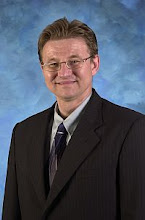- A World Currency for Capitalization
The recent freezing of American financial markets has proven how the economies of the world are controlled by accounting rules and government regulations. It also reveals the inherent, invisible force that makes capitalization work: vast reserves of pledged capital ("reserves") that are needed to fuel liquidity in our day-to-day commerce.
The current "crisis" shows us, numerically, that about $45 Trillion Dollars are required to generate a $25 Trillion Dollar economic system. In other words, we need a reserve of tied-up money to fuel a smaller amount of actual, day-to-day commerce. This $45 Trillion in pledged dollars would appear to evaporate if it were actually called upon. A crisis would occur, as only $25 Trillion is actually available in liquidated assets.
Alexander Hamilton appears to be the first American to recognize and understand this. Hamilton was the first American to successfully create illiquid capital reserves in excess of their true underlying, liquidated, equity. Without Hamilton, the U.S. very likely would not exist today. Unfortunately, our society's understanding of this basic, natural and mathematical law of economics has been repeatedly lost and regained throughout our march through human history.
Roosevelt saw this, as the world economy expanded and roared past the amount of gold available to back it. Roosevelt instituted mechanisms to create stable sources of trapped valuation. Appreciated stock, bank loans based on marginal reserves, and insurance policies are examples of creation of trapped valuation. This trapped valuation does not really exist, but serves as means for creating illiquid capital reserves in excess of their true underlying, liquidated, equity.
To illustrate, imagine if everyone tried to sell all their shares of a stock; the price would go down. Therefore, the market capitalization of a stock is wealth that only exists in theory and only exists as long as few are willing to sell. The valuation is therefore "trapped". One could say that the valuation is "virtual". It is this trapped capital -- capital that is segregated from the day-to-day economic system -- that creates liquidity in day-to-day commerce. When this "trapped" or "virtual" capital is called upon -- when attempts are made to put or liquidate this virtual capital into the flow of day-to-day commerce -- its value falls and liquidity is lost.
Attempts to inject funds into the economic system -- without reintroducing this virtual capital -- actually make the problem worse. A $25 Trillion Dollar economic system now becomes a $30 Trillion Dollar economic system -- requiring now perhaps $51 Trillion instead of $45 Trillion to fuel liquidity back to a robust economy.
The required key is creation of virtual capital that is adequately segregated from the operational economy. Just as Roosevelt found virtual capital mechanisms greater than the world's gold supply, a new form of virtual capital must be recognized that can be greater than capital markets, lending on bank margins, and insurance credit default swap generation.
One solution that provides adequate political opportunity and social stewardship is the creation of an international monetary unit -- in short, a world currency.
Such a currency would be restricted from being used in the day-to-day economic system. Similar to loans to third world countries that are never repaid (another form of virtual capital), such a world currency is only used as the source for securing capital borrowing. It does not flood out into the day-to-day economic system -- as will stocks, mortgage-backed securities, and investment insurance instruments. Such an international monetary unit is a world-governor that can control run-away currency devaluation and enable industrial development in otherwise destitute countries.
Such empowerment belongs to people, not corporations or banks. In one application, a country may choose to vest international currency ownership as a social security resource. It represents capital accumulations to be used to support the aged, disabled, and widowed. Allocation by population and relative economic need creates, over several generations of time, an equitable way to secure and vest all peoples through capitalization. The only way to end poverty is to vest all people with capital.
The timeless problem of lack of personal wealth can be mitigated with a global currency. Individual capital is the key to permanent, sustained prosperity in world dominated by energy, machines, and robots. The individual who is without capital to generate income is forever enslaved to work or rely on some charitable force. An international currency unit that is dedicated as a trapped capital pledge to an individual's social security provides the virtual capital needed to drive liquidity in the global economy. That currency also provides a universal unit of capital that recognizes the need and obligation of the world's citizens to accumulate capital.
Currently, the world needs approximately $45 Trillion Dollars in stable, virtual capital. Recent financial events -- mostly caused by regulatory changes -- have contracted the amount of recognized virtual capital by $11 Trillion to $22 Trillion Dollars. This has resulted in a cascading series of events leading in a rush to liquidate equity and collapse in stock and real estate values. The immediate creation of a $10 Trillion Dollar international monetary unit, distributed or otherwise made available to G-20 nations, will place the global economy back to year-end 2007 levels. Continued, measured periodic distributions of additional virtual capital will fuel global progress and cushion the loss of jobs caused by the expanding success of environmental and sustainability programs.
(c) 2009 Knobloch. All rights reserved. Contact for publication permission. http://www.charlesknobloch.blogspot.com/



